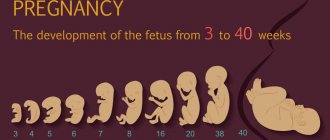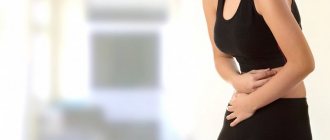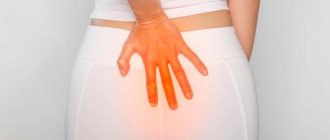Pain in the ovary during ovulation is considered normal. There are a number of pathological processes accompanied by this symptom. For planning couples, this phenomenon is a signal of the arrival of the most favorable day for conception. To understand why it is necessary to pay attention to the signs of egg release, you need to understand how it proceeds.
Kinds
Ovulation can be early, late, and also timely. Premature ovulation is characterized by the early release of the egg - before the middle of the monthly cycle. Often this process is a consequence of weight loss measures or nervous tension. Possible causes also include:
- Physical exercise;
- Diseases;
- Hormonal imbalances;
- Intense sexual intercourse.
Hormonal imbalances can also trigger late ovulation. If such concerns arise, it is important to undergo an ultrasound examination. An unstable cycle leads to difficulties in calculating the timing of ovulation, since a woman’s hormonal system is malfunctioning.
What is an ovary
The ovaries are one of the organs of the female reproductive system.
They are located in the small pelvis. There are two of them in a healthy female body. The ovaries consist of medulla, on top of which the cortex is located. The medulla itself is represented by a large number of connective fibers, which are not located too tightly together. Connective fibers consist of elastic components; they are necessary for the supply of blood due to the functioning of the circulatory system.
The cortex is represented by a large number of follicles, the maturation of which occurs at different times. The upper layer of the cortex is the stroma.
The size of the ovaries should be no more than 8 cm3 - this is considered a normal, healthy state of the organs. This size can be indicated by the parameters 30 x 25 x 15 mm.
Depending on the phase of the menstrual cycle and the age of the woman, the size of the ovaries changes. The ovaries reach their largest size at the age of 30-49 years. After menopause, organs decrease in size.
The functions of the ovaries are:
- Maturation of female germ cells.
- Production of hormonal substances such as estrogen, progestins, androgens.
Computations
The egg lives in a woman’s body for one day. Sperm can survive for 2-3 days. For this reason, spouses planning a pregnancy need the sperm to fall into the woman’s reproductive system 2-3 days before the ovulation process or no later than 24 hours after it.
To calculate the day of ovulation, you need to count the number of days of one cycle (from the beginning of menstruation of one cycle to the beginning of menstruation of another). Then divide the resulting interval in half with a possible adjustment two days before or after. The resulting days correspond to the date of ovulation. Thus, ovulation occurs on the 14th or 15th day of a 28-day menstrual period. With a 35-day period, ovulation can accordingly occur on days 17-18.
After ovulation, the ovary pulls - what is the body signaling?
Often, after ovulation, the ovary tugs a little; this condition is preceded by harmless factors or possible pathologies. Discomfort is felt on the right or left side of the lower abdomen. To understand the problem, it is worth familiarizing yourself with all its possible aspects.
The nature of pain, their features
The type of pain is determined by the individual nuances of the body and possible concomitant pathologies. The character also depends on the phase of the menstrual period.
Pulling. After the ovulation process, the ovaries are pulled due to increased local blood circulation in the genitals. There is an increase in pressure on the follicle when it reaches its maximum size.
- Stabbing. The pain is of low intensity and lasts less than a day. The phenomenon is not considered a pathology.
- Aching. When pain impulses are prolonged, they are usually associated with the presence of inflammation or other pathologies of the reproductive system.
Body signals
During ovulation, the following signs are present:
- Quality and quantity of cervical mucus. Before ovulation, increased discharge changes in color, acquiring a shade similar to egg white;
- Within a few days, excitability and sexual desire increase;
- The basal temperature indicator increases. It stays at this level for another 2 days;
- Heaviness of the mammary glands appears due to changes in the hormonal state;
- The uterus becomes softer and opens more.
Diagnosis of a favorable time for conception can be carried out using a special test.
Pain after ovulation as a sign of pregnancy
One of the main clues to pregnancy is pain that appears approximately 4 days after ovulation.
Pain after ovulation as a sign of conception
When pregnancy occurs after ovulation, women often notice that the ovary begins to hurt. You may also experience discomfort in the lower back or in the uterine area.
If conception has occurred, stronger pain during ovulation begins to appear for 6-7 days. This period is the most favorable for implantation and it is most active. These sensations will last from one hour to one day.
During this period, a woman may see a couple of drops of blood on her underwear, which can be mistaken for menstruation. In fact, this process is called implantation bleeding. It appears as a result of the fact that a fertilized egg is attached to the wall of the uterus.
What kind of pain can be observed in the first days of pregnancy?
Pregnancy is a very serious period. And the female body is preparing for it, going through many changes, both at the physiological and hormonal levels. Many of them are very painful for expectant mothers. May be observed:
- pain in the lower back and abdomen;
- headache. When hormones rage, neurological symptoms change dramatically. Therefore, a pregnant woman may constantly complain that she often has a headache.
Some patients come to the doctor with complaints as soon as they feel discomfort in the abdomen. They do not yet know about their “interesting situation.” The thing is that pain can be provoked by just microscopic damage to the mucous membrane or blood vessel. A couple of drops of blood may also be normal.
The stomach can also hurt due to changes in hormonal levels. This all happens because there is more progesterone in the blood.
Why does it hurt during sex during ovulation?
Another unpleasant sensation is caused by the fact that the ligaments are stretched and the center of gravity changes. These symptoms are not harmful, and you do not need to see a doctor because of them.
Manifestation of symptoms
During ovulation, the following symptoms may also occur:
- The ovaries hurt in a cyclic sequence. With a menstrual period lasting 28 days, pain appears in the middle of the cycle around the 13th day, when ovulation occurs;
- During ovulation, the right or left ovary hurts. This depends on the location of maturation and release of the egg;
- Spotting.
The pain can be sharp, dull or aching. It can last a few seconds or hours. Painful symptoms also often appear after ovulation, right before the start of menstruation. If the process proceeds normally, then a corpus luteum is formed in place of the released egg. To form it, the body produces progesterone. A small amount of the hormone does not allow the corpus luteum to form. This process stimulates partial detachment of the mucous membrane of the uterus, causing pain.
Pain in the ovary may begin several hours before the ovulation process. Sometimes the occurrence of such sensations can deprive a woman of her ability to work.
Why do women's ovaries hurt before ovulation?
Women who are faced with pain syndrome think about whether the appendage may hurt before ovulation. The answer is clear – pain is possible.
They are caused by pressure from an enlarged ovary on nearby organs. Normally, discomfort does not affect performance and does not last too long. Their duration is 24-48 hours.
The nature of pain before follicle rupture is as follows:
- Aching;
- Tingling;
- Pulling;
- Shooting;
- Shooting to the leg or lower back.
The character after ovulation pain is less intense. Most often, a woman feels heaviness and burning in the ovulated ovary. Symptoms indicate the functioning of the corpus luteum. It ensures the growth of progesterone. If fertilization takes place, the hormone will ensure successful implantation.
Ovarian pain during ovulation
Many women come to the doctor complaining that their ovary hurts after ovulation. In such situations, the gynecologist talks about reproductive processes from a physiological point of view.
Discomfort in one of the ovaries is considered completely normal. The appendage in which the corpus luteum formed after ovulation is painful. But if both ovaries hurt, it is advisable to be vigilant and consult a doctor.
Possible reasons for this phenomenon include:
- Multiple ovulation;
- Adhesive process in the pelvis;
- Ectopic pregnancy;
- Infectious diseases;
- Endometriosis.
Ectopic pregnancy
Endometriosis
With multiple ovulation, pain due to excessive strain on the body. The eggs mature on both sides at once. This phenomenon is considered rare. Usually the ovaries work alternately. As a result of multiple ovulation, multiple pregnancies can be expected.
Read more about endometriosis.
The inflammatory process in the pelvis develops as a result of the penetration of pathogenic microorganisms. The main complication of inflammation is the adhesive process. It disrupts the patency of the fallopian tubes and changes the position of the ovaries. Adhesions can cause pain in the appendages. They appear not only during ovulation, but also on other days of the cycle.
Abdominal pain
During ovulation, mainly one appendage hurts. But at the beginning of the follicular phase, discomfort may be present on both sides. This is due to the growth of follicles, as a result of which the volume of the ovaries increases. When a dominant follicle appears, the others begin to deflate. During rupture of the follicular walls, pain is felt only on one side.
Why do the ovaries hurt during ovulation?
An acute attack of pain may indicate rupture of the follicle with subsequent release of the egg beyond its boundaries. At this moment, a woman may notice a slight deterioration in her health.
If the left ovary hurts in the middle of the cycle, ovulation occurs there. The cyclicity of the appendages is individual for each woman.
For some representatives of the fair sex, the left appendage works better, for others, the right one.
Not in all cases, intense pain is considered normal. If the follicle was too voluminous, the ovary may rupture. In medicine, this deviation is called apoplexy.
It poses a threat to the life and health of the patient. In case of acute pain syndrome, you should not let the situation take its course. You should immediately consult a doctor to determine the cause of the discomfort.
The risk of apoplexy increases in the presence of cysts and MFN.
Read more about the IFP here.
And a detailed article about apoplexy.
Apoplexy of the ovary
The reason why the ovary hurts after ovulation may be gynecological diseases. The most common of them include:
- Salpingitis;
- Cystic formations;
Salpingitis
Does the ovary pull after ovulation?
If the right or left ovary pulls immediately after ovulation, this is most likely due to a rupture of the follicle. But the pain may increase due to inflammatory processes and pathology of the reproductive organs. For example, when a cyst ruptures, a sharp spasm is felt.
When the ovary tingles some time after ovulation, this may indicate pregnancy or a gynecological disease.
The main causes of pain in the side after ovulation:
- Follicle rupture;
- A sharp increase in progesterone;
- Individual characteristics of the body;
- External factors negatively affecting the process;
- Development of pathology of the reproductive organs;
Ovarian follicle
The pain can be of different types. More often than not, the ovulatory process is accompanied by a nagging or aching pain, sometimes cramping. If you experience stabbing or cutting pain, it is better to consult a doctor, as this may be a sign of a disorder of the reproductive system or a disorder due to ovarian dysfunction.
Why do the ovaries hurt after ovulation?
It is important for every woman to know why the ovary hurts after ovulation. In most cases, there are no unpleasant sensations or the woman simply does not notice them.
The period starting after ovulation and ending with menstruation is called the luteal phase of the cycle. It is accompanied by an increase in hormones responsible for the development of pregnancy. The woman’s body begins to prepare for the possible acceptance of the embryo.
During this period, the appendages actively produce hormones, which affects the woman’s sensations.
Most often, after ovulation, the right ovary hurts. According to statistics, it is in it that full-fledged eggs mature. This is due to the peculiarities of blood circulation in the female body. If at the same time after ovulation the left ovary also hurts, there is no need to worry. Discomfort may be the result of the resorption of small follicles that failed to become dominant.
Ovarian follicle
Often women confuse ovulatory pain in the right side of the peritoneum with symptoms of acute appendicitis. Incorrect diagnosis in this case can lead to serious complications.
When the appendix is inflamed, in addition to abdominal pain, nausea, vomiting and pale skin appear. The diagnosis is made after palpation of the peritoneum. When pressing on the area 2 cm below the navel, the pain will intensify.
If appendicitis is suspected, seek emergency medical attention.
Some women have pain in the left ovary. Ovulation may have nothing to do with this process. Among the possible causes of malaise are diseases of the digestive system. In this case, stool is disrupted and appetite disappears. Pain may spread to the epigastric region.
How to relieve pain in the ovary during ovulation?
Once it becomes clear why the ovary hurts after ovulation, you can think about ways to eliminate the discomfort. Physiological pain goes away on its own after some time. To make you feel better, the following groups of drugs are allowed:
- Analgesics (Nise);
- Antispasmodics (No-shpa, Spazmalgon);
- Nonsteroidal tablets (Ibuprofen, Diclofenac).
Analgesic
Antispasmodic drugs (antispasmodics)
If the ovary hurts after ovulation due to the development of salpingitis, anti-inflammatory therapy is carried out. Most often, the medicine is administered intravenously while the woman is in the hospital.
For cystic formations, hormonal medications are prescribed. If treatment does not produce the desired effect, the tumor is removed surgically. Foci of endometriosis are eliminated in the same way.
If adhesions have formed in the pelvic area, they are dissected under general anesthesia.
If the ovary hurts after ovulation due to an ectopic pregnancy, you cannot do without surgical intervention.
The embryo, instead of the uterine cavity, is often attached to the ovaries. As it grows, the risk of organ damage increases. If the problem is detected in a timely manner, it is possible to save the appendage completely or partially. Lack of timely qualified assistance can cause serious health complications.
A detailed article about implantation bleeding.
For pain caused by implantation, standard painkillers will not help. The only thing a woman can do is limit physical activity. It is also advisable not to overcool and not take a hot bath. A lumbar massage can help you feel better.
After a few days, the discomfort in the appendages will become less pronounced. If this does not happen, you need to make sure there is no ectopic pregnancy. For these purposes, an ultrasound examination should be performed.
The fetus in the uterine cavity should be visualized from the 5th week of pregnancy.
Causes of pain
In addition to endometrial detachment, causes that provoke pain during ovulation include:
- Ruptures of the vessels that are located at the base of the follicle that released the egg;
- Contractions of the uterus. Liquid from a ruptured follicle can enter the epithelium of the uterine cavity, irritating it;
- Excessive tension of the follicle walls at the time of egg maturation.
Pathological processes can also occur during ovulation due to diseases. Eg:
- Ectopic pregnancy;
- Oncological diseases;
- Cystitis;
- Varicose veins in the pelvic area;
- Salpingitis. Fallopian tubes become inflamed due to infection;
- Endometriosis. The disease is also accompanied by pain during menstruation and sexual intercourse;
- Ovarian cyst. A large amount of fluid in the follicle bothers the woman for several days.
Pain in the lower abdomen on the right may indicate appendicitis. Symptoms are accompanied by fever. If there is bloody discharge, it is necessary to check for the presence of a cyst in the cervical canal area and endometritis.
Pain may also radiate to the side or lower back.
What happens in the body during ovulation
To understand the causes of the painful condition, it is necessary to find out what generally happens in the gonads at this time. At a favorable time for fertilization, the egg leaves the follicle and moves into the abdominal cavity. This phenomenon is characterized by cyclicity, depending on menstruation. From a physiological point of view, the process begins to appear from the moment of puberty, that is, from the age of 12-13, and disappears during menopause.
After fluid accumulates in the vesicles, the cell matures. The reproductive system initially selects a dominant follicle, which increases in size. Its walls stretch, increasing pressure on tissues and nearby organs, preparing for rupture. An increase in diameter of up to 2 cm can cause pain. If a girl does not become pregnant during this period, then she should expect her menstrual cycle in 14 days.
Dangerous or not
The manifestation of pain during the ovulation period is physiological in nature. Such symptoms do not threaten health, which means they do not require special treatment. However, if the ovaries hurt for the first time during ovulation, it is necessary to find out the cause of its occurrence. A specialist will determine whether ovulation is truly the source of pain. During the examination, it will be possible to exclude the possibility of diseases of the woman’s reproductive system.
If ovulation is the source of pain, your doctor may prescribe pain medications. Sometimes hormonal contraceptives are prescribed to suppress the ovulation process. Thus, the source of pain is neutralized.
Severe manifestations can be reduced by relaxation, creating a calm environment, and drinking plenty of fluids. If the pain comes directly from the ovulation process, it is possible to use a warm heating pad in the lower abdomen. This method can be harmful if you have other diseases.
Character
The negative feelings that arise as a result of this process can be of a different nature and be expressed more or less significantly.
- The tingling sensation is usually strictly localized in the ovary and does not erode. It has a rather pungent nature, although not too pronounced;
- Pulling, as a rule, are also not too pronounced. When the left ovary is pulled after the end of ovulation, erosion may occur in the side, back, or abdomen;
- Other types of pain, including acute pain that is localized but not too intense, are also possible.
Tingling in the organ after maturation is considered a normal process and is almost not felt.
Warning signs
A woman should especially pay attention to the following symptoms if her ovary hurts during ovulation:
- Very severe pain. Rupture of the follicle can occur with great force, significantly damaging the ovary. This process can lead to bleeding instead of a slight release of blood cells. The woman's blood pressure drops, headaches appear, and she feels dizzy. In this condition, a woman needs the help of a doctor, with possible surgical intervention;
- Aching pain along with bleeding. Such signs may indicate uterine disorders. For example, ectopic pregnancy. Immediate medical attention is required;
- Long lasting. Possibly a sign of sexual dysfunction. Often accompanied by discharge, frequent urination and pain. An accurate diagnosis can only be made under the supervision of a specialist;
- Frequent periodic pain in the lower abdomen on the right. The cause may be inflammation of appendicitis.
Unpleasant sensations after caesarean section
Whatever one may say, after this surgical intervention, every woman is faced with the fact that a scar remains in the ovarian area; it is during ovulation that pain may occur in this area after childbirth. This is another reason why your stomach hurts during ovulation. In order to get rid of this, you need to contact a massage therapist and physiotherapist.
When is a doctor needed?
If your ovary hurts during ovulation, then you need to plan a trip to the doctor. However, immediate contact with a specialist is required if, in the middle of the menstrual cycle, the pain does not stop within 2 days and is accompanied by other signs:
- Intense pain provokes loss of consciousness;
- Increased body temperature;
- Dizziness;
- Nausea, vomiting;
- Diarrhea;
- Shortness of breath, headaches;
- Painful urination.
To determine the etiology of pain, it is recommended to keep a diary with notes about the cyclical occurrence of pain and its features. Any pathology is manifested by a number of symptoms. Timely diagnosis plays a significant role in recovery.
For diagnostic purposes, the specialist will prescribe a series of examinations, including:
- Carrying out anamnesis;
- Examination by a gynecologist;
- Venous blood analysis;
- Ultrasound;
- Diagnostic laparoscopy.
If a pathological disease is detected, the doctor will prescribe special treatment.
What ailments can be suspected?
In addition to the normal manifestations of pain during and after ovulation, it should be noted that they can be a sign of serious internal diseases in the patient’s body. You should pay attention to diseases that may cause acute pain.
- Ectopic pregnancy . Accompanied by bloody vaginal discharge, cramping attacks of pain, increased pain during walking and defecation.
- Ovarian diseases . Ovarian cyst and torsion of its legs, other ovarian tumors, apoplexy (rupture) of the ovary. In these cases, pain can occur on either side.
- Cyst rupture . Accompanied by cutting and pulling pain.
In addition, pain during ovulation is similar to pain during the following diseases:
- peritonitis;
- inflammation of the appendages;
- appendicitis;
- varicose veins of the pelvic area;
- call.
Signs of pathologies
Unfortunately, pain during ovulation can be pathological in nature, caused by various diseases , and in this case, consultation with a specialist will be mandatory. An approximate list of symptoms for which this is necessary looks like this:
- pain lasts more than three days;
- prolonged increase in body temperature, accompanied by chills and other signs of intoxication;
- vaginal discharge has an uncharacteristic appearance and an unpleasant odor;
- multiple heavy bleedings during this period;
- disturbances in the gastrointestinal tract;
- irradiation of pain to the bladder area, lower back, area around the navel;
- decreased blood pressure with increased heart rate;
- increased fatigue against a background of general weakness.
Pathological causes of painful ovulation
You should definitely undergo an examination and rule out serious diseases if you have the following symptoms:
p, blockquote 20,1,0,0,0 –>
- severe nausea and/or vomiting;
- weakness;
- temperature increase;
- loose stool;
- dizziness.
If the pain is intense, requires taking a certain position of the body, is localized in the right side, hospitalization in a surgical or gynecological hospital is required, because this can manifest not only appendicitis, but also ovarian apoplexy, torsion of the pedicle of an ovarian cyst, acute inflammation of the uterine appendages.
p, blockquote 21,0,0,0,0 –>
A painful ovulatory phase is a sign of a disease in the presence of the following conditions:
p, blockquote 22,0,0,0,0 –>
- algodismenorrhea;
- heavy menstruation;
- pain during sexual intercourse;
- contact bleeding;
- lack of libido;
- disturbances in the basal temperature chart.
In this case, you need to visit a gynecologist as soon as possible.
p, blockquote 23,0,0,0,0 –>
p, blockquote 24,0,0,0,0 –>
Ovulatory pain - normal or pathological
It would seem that pain during ovulation has every reason to develop, because the follicle containing the egg first grows to a fairly large size and then bursts, and the nerve endings approaching the ovary react to both of these processes. But usually only those who have a low pain threshold feel this normally. That is, if a woman does not tolerate pain well from childhood and may even lose consciousness because of it, she should not be alarmed by the pain of the ovulatory phase, unless 5 conditions are met:
p, blockquote 9,0,0,0,0 –>
- Ovulation is determined by tests: determination of basal temperature (its decline was noted on the previous day, and on this day a sharp rise is visible), an ovulation test or ultrasound folliculometry.
- It hurts on one side (for example, the left ovary), since in each cycle the dominant follicle, that is, the one that prepares the egg for fertilization, develops only in one ovary. Each cycle, the “working” ovary may change, but it may happen that for several months in a row the pain is felt only on one side.
- There are no pathological symptoms: dizziness, vomiting (mild nausea is allowed for 2-3 hours), weakness, or a feeling of unreality of what is happening.
- The temperature remains up to 37°C, the maximum rises to 37.3-37.4°C.
- Other symptoms of ovulation are also noted: swelling and tenderness of the mammary glands, a change in the nature of vaginal discharge to the appearance of raw egg white, and increased sexual desire. There may be a discharge of a small amount of blood (usually in the form of brown or yellowish mucus), which is associated with the detachment of a small area of the endometrium due to a sharp drop in estrogen levels.
Blood vessels approach the shell of the follicle in which the egg has matured - they provide nutrition to this structure. Therefore, when it bursts, the vessels rupture, and a small volume of blood flows into the abdominal cavity. A small amount of fluid in which the oocyte was previously located is also released. These fluids are an irritant to the peritoneal nerve endings, and therefore cause pain during ovulation. In this case, the pain is felt on one side and can migrate from the left or right to the lower abdomen - the suprapubic region. If blood flows into the space between the vagina and rectum, nagging pain is felt not above the pubis, but in the lumbar region.
p, blockquote 10,0,1,0,0 –>
When a woman has a low pain threshold and has 5 of the above signs, then pain in response to bleeding from the follicle vessels is a normal phenomenon that does not require any emergency measures. If the pain syndrome is very intense, or does not occupy the lower abdomen or lower back, but radiates to the left or right side, you need to be urgently examined for three conditions.
p, blockquote 11,0,0,0,0 –>
- Endometriosis
Endometriosis is characterized by the appearance of areas of the endometrium outside the inner layer of the uterus: on the uterine myometrium (adenomyosis), vagina, rectum and other locations. In this case, all ectopic foci of the endometrium react to changes in the balance of hormones and secrete a larger volume of blood than is required for ovulation. It causes pain.
Is lower back pain associated with ovulation?
p, blockquote 31,0,0,0,0 –>
If a patient complains of pain in the lumbar region that occurs after ovulation, the doctor needs to conduct a differential diagnosis of conditions such as:
p, blockquote 32,0,0,0,0 –>
- threat of miscarriage;
- uterine fibroids;
- rupture of an ovarian cyst;
- appendicitis;
- pyelonephritis;
- intestinal inflammation;
- cystitis.
Why does this particular area hurt? This is explained by the fact that the nerve endings that go to the uterus and its appendages, lower intestines, bladder and kidneys have common “roots”, so the impulse coming from the diseased organ is “dissipated” throughout all innervated structures.
p, blockquote 33,0,0,0,0 –>
p, blockquote 34,0,0,0,0 –>
How to alleviate the condition?
In the absence of medical contraindications, every woman can alleviate her condition at this time by adhering to simple recommendations:
- Increase sleep duration and minimize stress load on the body.
- Avoid active sports and reduce other physical activities.
- Increase the amount of fluid consumed per day.
- If you are sure that the pain is purely ovulatory, apply a heating pad on the desired side.
- Go on a diet that excludes fried, salty, spicy, fatty and sweet foods. In addition, it is recommended to give up coffee, chocolate and legumes for several days.
Some statistics
p, blockquote 5,0,0,0,0 –>
After a girl’s menstruation has become stable, after a while she begins to notice changes in her condition that occur approximately in the middle of the cycle. Usually they only concern the mammary glands, mood changes or increased sexual desire, but 20-30% of women notice that their lower abdomen hurts during ovulation. This pain is nagging in nature, varies in intensity, and is usually noted on one side.
p, blockquote 6,0,0,0,0 –>
In 85% of women, pain during ovulation is associated with natural processes. In 14% of cases, such symptoms indicate a pathology of the reproductive system. Finally, there is a small, about less than 1% probability that just during the ovulatory phase of the cycle another pathology will develop, not related to the very release of the oocyte from the follicle.
p, blockquote 7,0,0,0,0 –>
p, blockquote 8,0,0,0,0 –>










